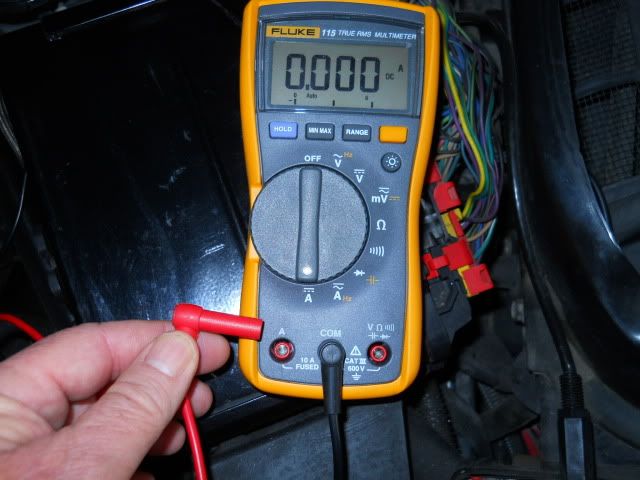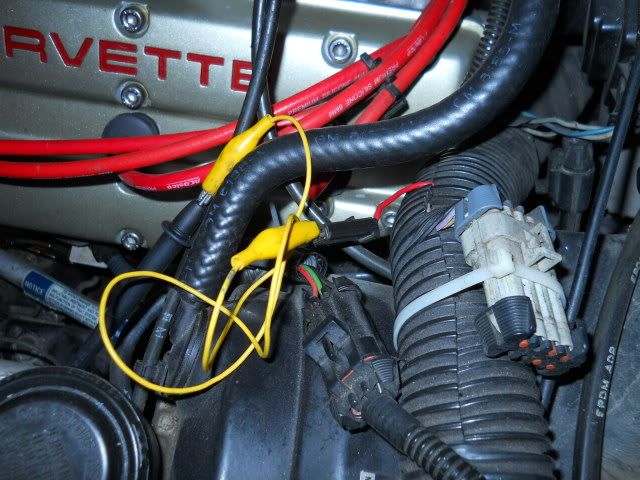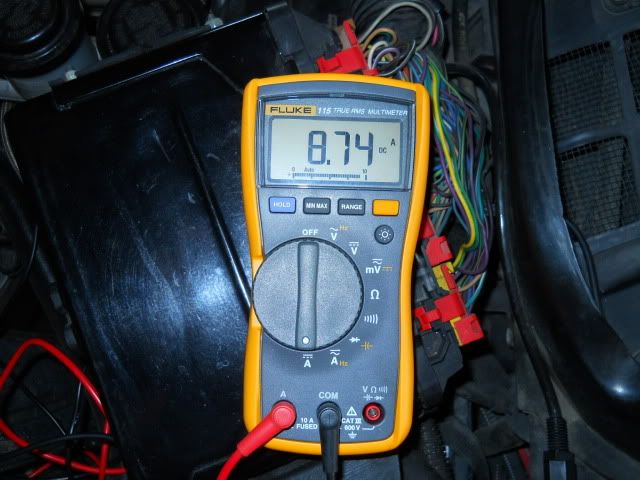Quote:
Originally Posted by fletchusmc

Got in the garage this morning and this is where I'm at.
Fuel pressure, cold, key on engine off 48 psi.
Idle 44 psi, stayed there as it warmed up.
Remove regulator vacuum line 53 psi.
2000 RPM 43 psi.
After shut down stayed at 48 for 10 minutes, disconnected pressure gage after that.
Took some catalytic temp readings
Driver's side
Front of cat 380F
Rear of cat 650F
Passenger side
Front 350F
Rear 460
Still making me think a problem with the cats. OR is it running way too rich on the driver's side and causing the cat to work harder and causing the higher temps?
|
The fuel pressure raises a flag; sounds like one of the pumps is not working - or at least the symptoms are the same (as mine were).
With the ignition OFF, an ammeter connected between the positive battery post and the fuel pump diagnostic connector (the short red pigtail jutting out of the wire harness next to the diagnostic connector which is toward the middle, near the ECM).
Configuring the meter to read amperes...

Connecting the meter to the fuel pump test jumper:
RED LEAD TO POSITIVE POST,
BLACK LEAD TO THE TEST PIGTAIL.

BOTH pumps are powered ON and you can measure the current. Each pump will draw about 4 to 5 amperes ea, for a total of 8-10 amperes.

While the pumps are running, you should measure about 53 psi (again w/ ignition switch OFF). If your current is about half of what it should be, and/or the pressure is not up to par, then pulling fuses (as Jerry suggested) will isolate which fuel pump is not working (NO pressure with the ignition ON).
As for injectors...anything is possible, but the 93+ cars had injectors that were alcohol tolerant, and less likely the issue...BUT never assume.
BTW, you should always check electrical coils (ignition and injectors too) when they are at operating temperature. A bad coil will often read normal resistance until they are heated up.